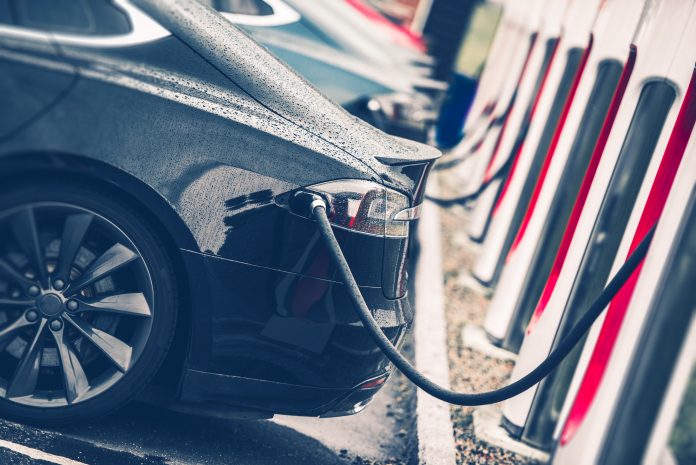You’ve undoubtedly heard that Ford, the colossus of the car world, is slashing its F150 Lightning production in half due to slowing demand. GM and other OEMs are either following suit or trimming back their EV plans.
And CNBC is saying, “Hertz is pumping the brakes on plans to electrify more of its rental car fleet after EV repair costs came in higher than the company anticipated, and after Tesla price cuts reduced the resale value of the majority of electric cars in its fleet by about one-third.” Wow, who would have seen that coming?
Clearly, the public isn’t broadly accepting the EV alternative. Nor, let’s be honest, have they ever, although there’s been a constant drumbeat saying EVs are the greatest thing ever.
For years, those of us pointing out the obvious have felt a kinship with that scene in Zoolander when Mugatu (Will Ferrell) exclaims, “Doesn’t anyone notice this? I feel like I’m taking crazy pills!” As we look at the EV market, it’s not the roaring electric future many in the industry have sold to the public but a sobering pause in the echo chamber of EV hype.
Let’s cut through the electric charge and face the stark reality: the EV market is not just hitting a speed bump; it’s cruising towards a potential roadblock. Or, to coin a phrase, running out of juice. The narrative we’ve followed is one of an inevitable green utopia where EVs gracefully replace their gas-guzzling ancestors. But, as usual, reality isn’t as glossy as the brochures.
Subsidized Dreams vs. Economic Realities
From the get-go, the EV market was less about consumer demand and more about a green energy agenda heavily bankrolled by Uncle Sam and his local nephews. The sales pitch was simple: build them, and they will come – fueled by generous grants, tax credits, and incentives. Yet, here’s the kicker: much of this funding skipped over essential infrastructure and plunged straight into manufacturing and purchasing subsidies.
It’s akin to building a futuristic spaceship without considering where it will land. Sure, these subsidies made EVs momentarily attractive to a specific niche – let’s call them the wealthy ‘early adopters’ or ‘green enthusiasts.’ But for the average consumer struggling to purchase a median-priced $40,000 vehicle and 8% interest rates, the math didn’t add up.
The Price Tag Saga
Looking beyond the initial purchase price, the real-world ownership costs of EVs start to paint a different picture for consumers. The Texas Public Policy Foundation (TPPF) analysis suggests that the EVs we’ve touted as consumers’ environmental champions might be more of a taxpayer-subsidized mirage than genuine affordable green innovation.
TPPF’s analysis reveals that without the $22 billion in taxpayer gifts, the average 2021 EV would burden owners with an extra $48,698 over a decade.
What about charging infrastructure? Not as widespread or as convenient as promised. Maintenance? Let’s say those battery replacement costs can give even the most interested of consumers a new appreciation for good old combustion engines.
Not getting the promised range? Well, that’s more unachievable than ICE EPA gas mileage numbers. And then there’s the resale value – or the lack thereof. It turns out that an EV’s financial journey can be as bumpy as an LA freeway.
Surely, someone at a non-Tesla OEM figured out the above information before they went to market? I’m fairly certain an engineer brought up the obvious because we research and test everything in the automotive industry. Yet here we are making consumers figure this out in real-time, which isn’t going to increase the trust factor at the dealership level.
Public Sentiment and Market Reality
Now, let’s address the elephant in the room: public demand for EVs. According to an April 2023 JD Power Shopping Guide, “Electric vehicles account for less than 1% of the 250 million vehicles, SUVs, and light-duty trucks sold in the United States. Because only around 17 million new cars are being built each year, changing the vehicles from gas-powered to electric will be a long process, especially as far as the government is concerned.”
The truth is the majority of consumers are still cozying up to their ICE vehicles. Why? Because they make sense – economically, practically, and yes, even environmentally, when you consider the entire lifecycle. Yet, there is a possibility that the tides could change.
JD Power goes on to add, “As electric vehicles become more popular, the price difference between them and conventional ones will narrow significantly. The increased number of charging and plug-in power stations has considerably aided electric vehicle growth. Because of faster charging and more efficient batteries, long-distance travel is becoming easier for owners.”
The Road Ahead: Bumps, Detours, or a Dead End?
So, where do we go from here? The industry needs a reality check. While an important part of our automotive future, EVs should not be considered the sole solution.
Dealerships and industry leaders must adopt a balanced approach, catering to diverse market needs without over-relying on EVs. The EV dream is noble but requires a practical and sustainable ecosystem that appeals to the average consumer.
The future may still hold a significant place for EVs, but let’s not kid ourselves – it should never be the one-size-fits-all solution that some have zealously proclaimed. As for those waiting for the EV market to explode into a flurry of consumer excitement, promoters are welcome to manifest their dreams of 100% EV acceptance. But they may just have to manifest a little longer. Maybe a lot longer. Maybe forever.







